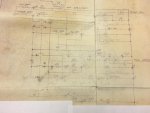TexasMaster
Member
- Location
- Lubbock Texas
From my following example (couldn’t upload a picture) there are several things I have “assumed” to be correct, but in the function of the particular machine I’m working on, I feel I’m misunderstanding something. Assumptions (as I could be wrong in more places than I think)... if an hoa is drawn in its off state, & asterisk are placed on the respective sides of the hand or auto side at each contact, I believe they would oppose the position they’re shown in only when the selection of that position is made.... ex. below, contact 1 n/o, closed in hand only, contact 2 n/o, closed in auto only, & (my most confused) contact 3 n/c, opened only in auto....???
Ps. In previewing the post it looks like my n/o contacts lines get shifted, but I think all would get the idea
(Hand/Off/Auto)
____
1. (X00) 0 0
____
2. (00X) 0 0
3. (00X) 0___0
Ps. In previewing the post it looks like my n/o contacts lines get shifted, but I think all would get the idea
(Hand/Off/Auto)
____
1. (X00) 0 0
____
2. (00X) 0 0
3. (00X) 0___0


